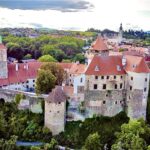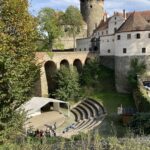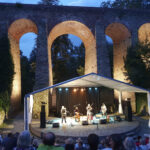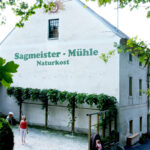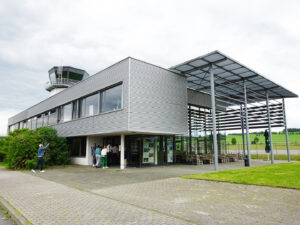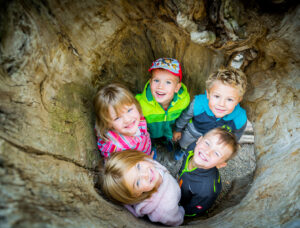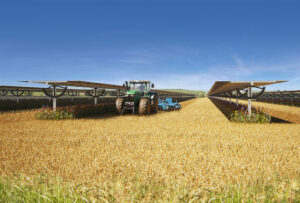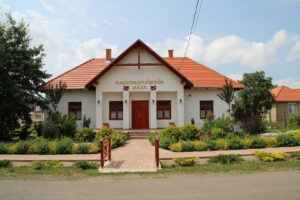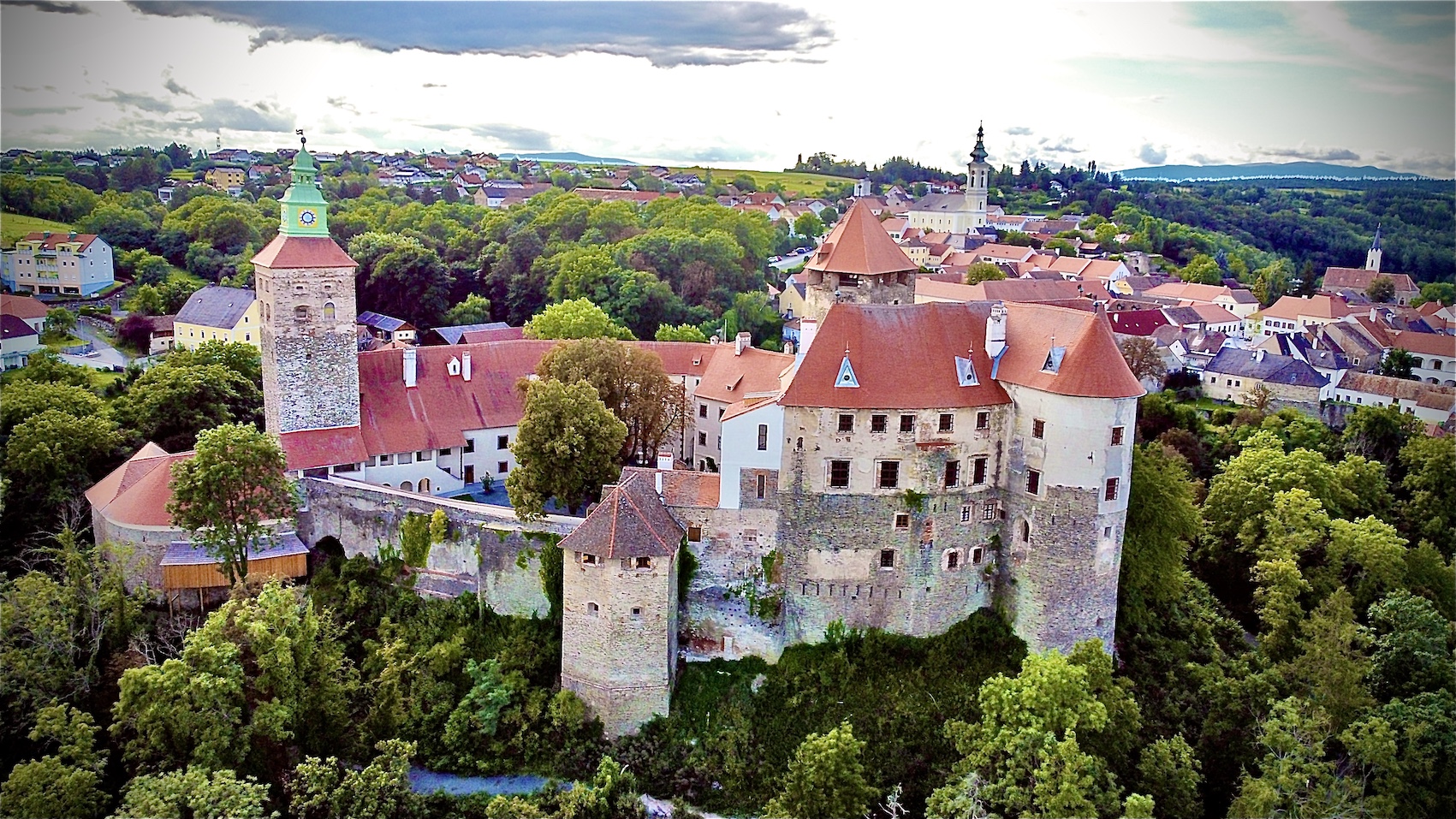
Stadtschlaining, Burgenland, Austria
The municipality of Stadtschlaining in the district of Oberwart in Burgenland can be described as exceptional as well as exemplary, which is not necessarily apparent in its entirety at first glance. Around 2,250 people live in the municipality, which consists of the five villages of Altschlaining, Drumling, Goberling, Neumarkt im Tauchtal and Stadtschlaining. In keeping with the province name, a beautifully restored castle in the historic center is a reminder of the town’s medieval heritage. However, taking a closer look at the history, the residents, and the mission of Stadtschaining, one will quickly realize that this is not an average Burgenland community.
When talking about Stadtschlaining, it is impossible to ignore the topic of the culture of peace. Stadtschlaining has been one of five peace cities worldwide since 1995 and takes the mission associated with this designation very seriously. The beforementioned castle has been extensively renovated and is home to a Peace Museum and Peace Center offering the increasingly popular “Peace and Conflict Studies” course. Stadtschlaining has become an international center for social and cultural exchange, paying peace the attention it deserves.
Related to this, one of the symbols of the community is a gift from Japan: one of the last five origami cranes made by Sadako Sasaki, who contracted leukemia as a result of the atomic bombing. According to a Japanese legend, every person who folds 1,000 cranes will have one wish granted by the gods. Sadako made 1,600 paper cranes, but her wish for recovery did not come true. However, the cranes she folds are considered a memorial to the atrocities of war and are intended to always remind people of the importance of peace. Sadako’s brother therefore distributed five cranes on five continents, and Stadtschlaining received the one destined for Europe in 2009 at a celebration with Sadako’s family. It has since been kept in the Friedensburg.
But peace is not only preached and studied in Stadtschlaining, it is lived in everyday interactions with one another. People of different origins – an unbelievable number of 25 nations are represented in Stadtschlaining – and of different ages live together peacefully here, diversity is definitely important. The intercultural and intergenerational exchange is promoted, among other things, by the lively club life. From sports clubs for children, brass bands, the volunteer fire brigade to the Walking Chicks, a walking club for the young at heart in the village, everyone will find a nice pastime here. So it is not very surprising that a large part of the population of Stadtschlaining is a member of at least one club. The community promotes coexistence and a sense of belonging among residents.
In addition, numerous efforts are being made towards integration, such as the “Live Music Unisono Now”, an initiative to integrate refugees, created in cooperation with the Joseph Haydn Private University, or the implementation of the Dornau dormitory cartel, which is also operated as a farm. This is one of several projects for the integration of people with disabilities, which places great value on movement. The participation of residents in the Special Olympics is particularly impressive, which clearly confirms the positive impact of the project. The integration of services such as “meals on wheels” or the MOKI mobile home nursing service also enable people in need to be cared for reliably. In general, Stadtschlaining focuses on accessibility in public space (if possible, all areas should be accessible for disabled people and prams) and it is an attractive place to grow old thanks to apartments suitable for senior citizens and various care facilities.
Furthermore, the municipality offers its population a varied cultural program consisting of blues festivals, street food markets, Christmas and farmers’ markets and various concerts. The concept of “house music” is particularly noteworthy here, with musicians holding small concerts in private living rooms.
From 1995 the community began strategic village development. As part of a village renewal process with citizen participation, models were developed, constantly evaluated and continuously implemented. Particularly noteworthy here is the successful cooperation between the community and the population, but also between the five districts, with the neighboring communities and also with some town twinnings, which promote both cultural and economic exchange.
From the structural design perspective of village renewal, one only finds words of praise for Stadtschlaining. A perfect example of this is dealing with the architectural heritage. Following careful renovation, new life was breathed into the historic city center with its partially listed building fabric. The respectful handling is also evident in the newly designed village square, which includes the state road in the overall concept.
In this context, it is clearly recognizable that the preservation of old traditions was very important to the community. For example, a typical village shop remained and was supplemented by a modern café, so that shopping and coffee gossip can be combined and the center is enlivened. This revitalization has also been achieved through the settlement of new shops and service providers in the village center. The memory of the historical heritage of the community is also maintained. Today a museum commemorates the long mining tradition. In addition, Stadtschlaining used to be a Jewish “Stettle” and the processing of history is a high priority. In the former synagogue there is now a museum including a library and focused on cooperation with the descendants of the Jewish community of Stadtschlaining and their involvement.
In addition to the restoration and revitalization of old buildings, Stadtschlaining also focuses on modern and energy-efficient building culture. The new elementary school, which was built in the center after a competition, deserves special mention here. In addition to the design aspects and the pedagogical concept, particular attention was paid to the inner-city connection and accessibility on foot.
However, it is not just the measures taken to preserve Stadtschlaining’s cultural heritage that should be highlighted, but also the effort that is made to protect the environment. Stadtschlaining is not only a Genussregion (pleasure region), but also part of the NATURA 2000 nature reserve. In principle, land and soil is used sparingly during construction and care is taken to ensure that the implementation is as ecological as possible, benefitting species like the horseshoe bats. Their population and habitat is protected and promoted in Stadtschlaining. The implementation of sustainable tourism strategies, projects to protect forest and meadow areas, the subsidized use of renewable energies, the greatest possible avoidance of gas and oil as well as a general conversion to LED lamps in public buildings and street lighting are decisive factors that Stadtschlaining can justifiably call itself a climate protection municipality.
The motto of the Village Renewal Award 2022 is “Building bridges”, which is being implemented in many ways in Stadtschlaining. Bridges between old and new but also old and young, between nationalities and religions, nature and people, the past, present and future are planned, built and strengthened in Stadtschlaining every day. The municipality offers its residents not just a place to live, but a home. Through the varied offers aimed at all sections of the population, the thoughtful design of the village and the preservation of its history and traditions, the protection of the environment, strengthening the community, solidarity and the empowerment of those who are dependent on it, Stadtschlaining stands out from other municipalities and serves as a role model, not only from the perspective of village renewal. An extraordinary community that was able to convince with its carefully developed strategies, the respectful handling of the old and the well thought-out planning of the new.
Evaluated: 2022


